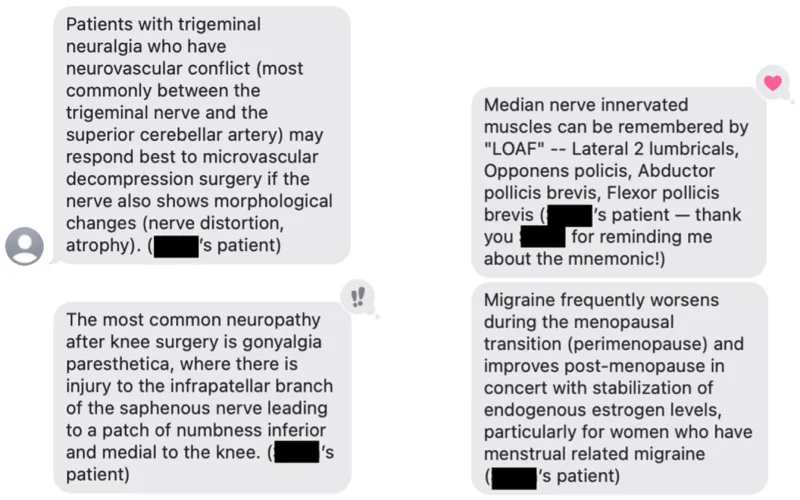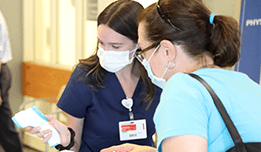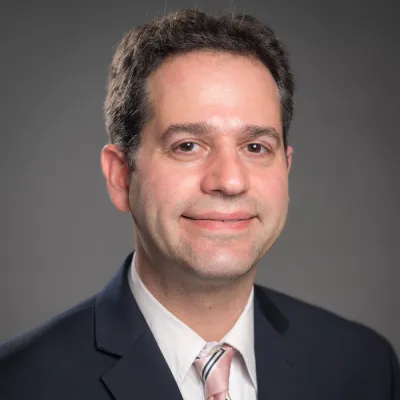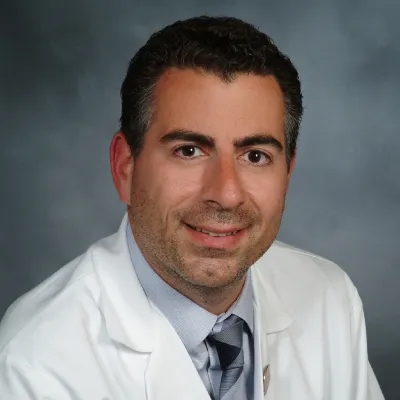There are plenty of opportunities for team-based learning in inpatient neurology care; rounds allow residents to participate in group learning and glean insights from several cases at once. But in the outpatient setting, there is a need for innovative teaching solutions so that residents can learn from every patient encounter, not just the patients they saw one-on-one with their supervising attending.
To address this learning gap, neurologists at NewYork-Presbyterian and Weill Cornell Medicine developed a first-of-its-kind group text messaging program to improve training for residents in outpatient neurology. Matthew Robbins, MD, and Joseph Safdieh, MD, worked with clinical neurophysiology fellow Anjeli Song, MD, who initially began her work on this during her neurology residency, to develop the program in which they disseminated clinical pearls to a cohort of 21 residents. Below, they discuss the results of their pilot study, how it led to improvements in patient care, and how it can be replicated across specialties.
Unmet Needs for Outpatient Learning
Dr. Robbins: Traditionally in education, whether its neurology or other settings where there’s both inpatient hospital and outpatient office-based clinical activities, there’s often a discrepancy between how residents and fellows make the most of the experience and really get to learn. As the neurology residency program director, I supervise our trainees who do a great job caring for the patients in our outpatient clinic. However, we’re often struck by how different it is because when you oversee an outpatient office-based experience, it’s a series of one-on-one encounters. You meet with a resident one-on-one, you discuss how the patient’s doing, what the resident thinks, what the interim test results were, how the patient responded to a medication, and then the two of you go and see the patient together in a supervised setting before moving onto the next patient with the next resident.
We wanted to find a way to disseminate the clinical pearls you would normally learn during inpatient rounds to our outpatient residents and fellows to enhance their learning experience.
— Dr. Matthew Robbins
That’s very different from hospital rounds where everyone talks about all the patients and as a group goes around to see all the different patients on a consult service. In that way, everybody gets to learn about all the patients, gets to see all the patients, and really gets to learn something from each individual patient encounter because every single patient interaction we have has something to teach us and something that we can share with the learners. That’s what spurred this pilot – we wanted to find a way to disseminate the clinical pearls you would normally learn during inpatient rounds to our outpatient residents and fellows to enhance their learning experience.
Deploying Learning Through Text Messages
Dr. Robbins: Between December 2020 and March 2024, we sent 230 text messages to our residents containing a key takeaway from a patient encounter. We used de-identified language in the messages to comply with the Health Insurance Portability and Accountability Act (HIPAA). In our clinic, at least half of patient encounters were for headaches. Therefore, in the text messages, we shared lots of clinical pearls that residents could use to improve treatment for individuals with migraine, which transcended to women’s health issues, primary care issues, treating other medical conditions that coexist with migraine, and so on.

Through this pilot program, text messages were sent to residents containing clinical pearls from patient encounters related to procedures, anatomy, treatment, and more.
Dr. Safdieh: The outpatient space is more of a solitary space compared to inpatient settings. And the question was, how do we create an opportunity for teaching in the outpatient space in an efficient and effective way? We found that sharing these nuggets of medical knowledge that came out of our outpatient visits through group text was an effective, novel type of teaching tool that did not disrupt the flow of the clinic.
Our goal was to reinforce all of the learning that takes place at the clinic so that residents could properly absorb the material – having a reminder at the end of the clinic to summarize and drill in key points so that in the future, we will remember that we had touched on this topic in a previous clinic.
— Dr. Anjeli Song
Dr. Song: Because we all have work phones, all of us have already designated a phone number readily available to the entire department that we would prefer to be contacted at for work-related issues. For these reasons, selecting text messaging as the vehicle for disseminating clinical pearls was a logical choice. We sent out a mix of message types in our study: some were procedural, some were related to anatomy, and some were related to treatment. Our goal was to reinforce all of the learning that takes place at the clinic so that residents could properly absorb the material – having a reminder at the end of the clinic to summarize and drill in key points so that in the future, we will remember that we had touched on this topic in a previous clinic.
Improvements to Outpatient Neurology Care
Dr. Robbins: As part of our study, we made sure to conduct surveys to assess whether residents could describe what they learned and how they applied the clinical pearls to subsequent patient encounters. Some cited that they understood how to better educate people about a potential side effect of a medication or how to decide which treatment to use for an individual patient.
Dr. Safdieh: A clinical pearl coming from a resident’s patient encounter, or a patient that was seen in the same clinic, is more likely to stick than reading the same material textbook without context. The texts also helped mitigate some of the solitary nature of outpatient care. This initiative is leading the way to better patient care because our residents learn from all of the patients that we see, and we apply those lessons to the next patient.
We encourage other outpatient departments to review this research and consider how a similar program may be implemented at their clinic to enhance the learning of their residents and fellows.
— Dr. Joseph Safdieh
The Future of Text Message-Based Learning in Outpatient Neurology
Dr. Robbins: This study was the first to use text messaging as a platform for sharing clinical pearls in an outpatient setting. Based on resident feedback, we plan to continue sending texts to future cohorts. Though our study has ended, we are continuing to keep track of clinical pearls and sharing them with residents.
Dr. Safdieh: Having our research published is the first step toward generating interest in this novel method so that it may be replicated in other departments, particularly at institutions like NewYork-Presbyterian where all physicians have dedicated work phones with secure messaging. We encourage other outpatient departments to review this research and consider how a similar program may be implemented at their clinic to enhance the learning of their residents and fellows.




